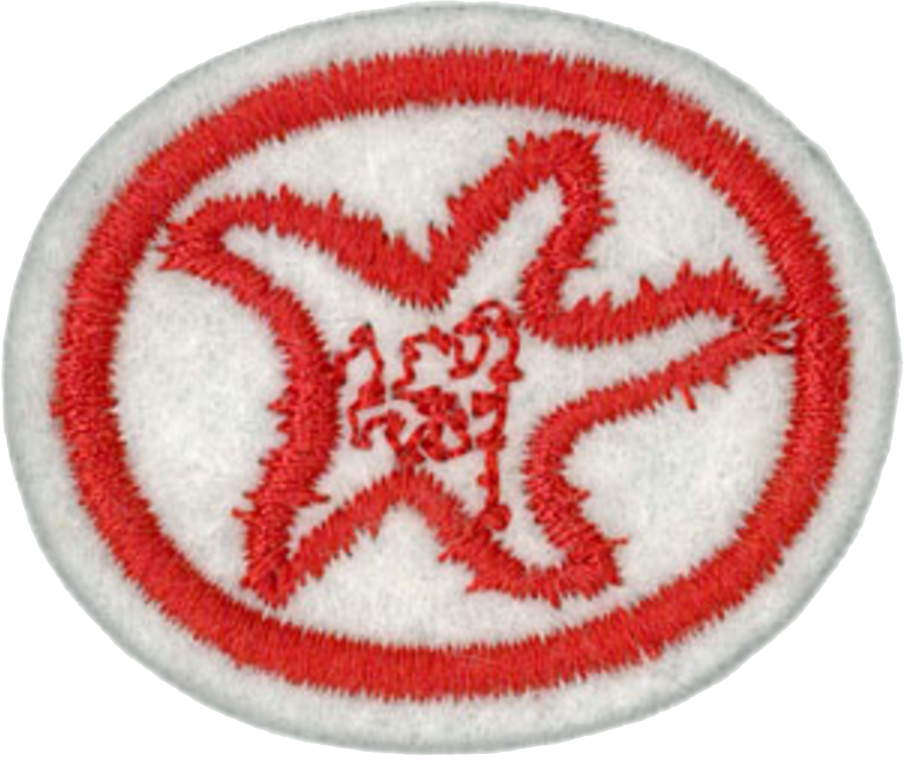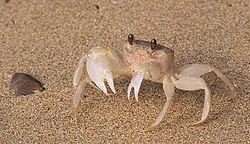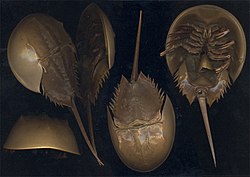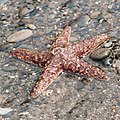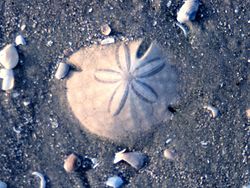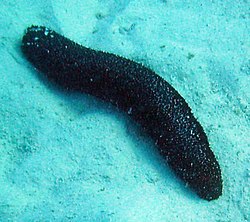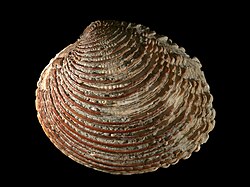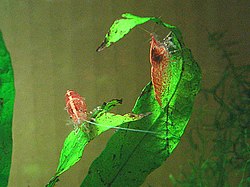|
|
| Line 64: |
Line 64: |
| | <noinclude></noinclude> | | <noinclude></noinclude> |
| | | | |
| − | <div lang="en" dir="ltr" class="mw-content-ltr">
| + | <noinclude></noinclude> |
| − | <noinclude> | |
| − | </div></noinclude>
| |
| | {{CloseReq}} <!-- 1k --> | | {{CloseReq}} <!-- 1k --> |
| | {{ansreq|page={{#titleparts:{{PAGENAME}}|2|1}}|num=1l}} <!--T:16--> | | {{ansreq|page={{#titleparts:{{PAGENAME}}|2|1}}|num=1l}} <!--T:16--> |
| − | <noinclude><div lang="en" dir="ltr" class="mw-content-ltr"> | + | <noinclude></noinclude> |
| − | </noinclude> | |
| − | <gallery perrow=3 widths=200px>
| |
| − | Image:Jellyfish.jpg|<center>''Chrysaora quinquecirrha''<br>(Stinging Sea Nettle)</center>
| |
| − | Image:Ripleys jellyfish.jpg|<center>''Aurelia aurita''<br>(Crystal Jellyfish )</center>
| |
| − | Image:Blubber Jellyfish 1.jpg|<center>''Catostylus mosaicus''<br>(Blubber Jellyfish)</center>
| |
| − | </gallery>
| |
| − | Jellyfish are marine invertebrates belonging to the class Scyphozoa of the phylum Cnidaria. They can be found in every ocean in the world and in some fresh waters. They are found drifting in the ocean either by themselves or in great schools. Each has a bell-shaped hollow body with tentacles used for catching food.
| |
| − | </div>
| |
| | | | |
| − | <div lang="en" dir="ltr" class="mw-content-ltr">
| + | <noinclude></noinclude> |
| − | <noinclude> | |
| − | </div></noinclude>
| |
| | {{CloseReq}} <!-- 1l --> | | {{CloseReq}} <!-- 1l --> |
| | {{ansreq|page={{#titleparts:{{PAGENAME}}|2|1}}|num=1m}} <!--T:17--> | | {{ansreq|page={{#titleparts:{{PAGENAME}}|2|1}}|num=1m}} <!--T:17--> |
| − | <noinclude><div lang="en" dir="ltr" class="mw-content-ltr"> | + | <noinclude></noinclude> |
| − | </noinclude> | |
| − | <gallery perrow=3 widths=200px>
| |
| − | Image:Napfschnecken Galizien2005.jpg|<center>''Patella vulgata''<br>(Common Limpet)</center>
| |
| − | </gallery>
| |
| − | The name Limpet is used for many kinds of mostly saltwater but also freshwater snails, specifically those that have a simple shell which is more or less broadly conical in shape, and which is either not coiled, or appears not to be coiled, in the adult snail.
| |
| − | </div>
| |
| | | | |
| − | <div lang="en" dir="ltr" class="mw-content-ltr">
| + | {{clear}} |
| − | Thus the word "limpet" is an inexact term, which is fairly often used as part of the common name of a wide variety of different marine and freshwater gastropod species, some of which have gills and some of which have a lung. The name is given on the basis of a limpet-like or "patelliform" shell, but the several groups of snails which have such a shell are not at all closely related to one another.
| |
| − | </div>
| |
| | | | |
| − | <div lang="en" dir="ltr" class="mw-content-ltr">
| + | <noinclude></noinclude> |
| − | <noinclude> | |
| − | </div></noinclude>
| |
| | {{CloseReq}} <!-- 1m --> | | {{CloseReq}} <!-- 1m --> |
| | {{ansreq|page={{#titleparts:{{PAGENAME}}|2|1}}|num=1n}} <!--T:19--> | | {{ansreq|page={{#titleparts:{{PAGENAME}}|2|1}}|num=1n}} <!--T:19--> |
| − | <noinclude><div lang="en" dir="ltr" class="mw-content-ltr"> | + | <noinclude></noinclude> |
| − | </noinclude> | |
| − | <gallery perrow=3 widths=200px>
| |
| − | Image:CyprusPlioceneGastropod.JPG|<center>A fossilized tube-dwelling serpulid worm attached to the shell of a gastropod.</center>
| |
| − | Image:Nur04505.jpg|<center>''Riftia pachyptila''<br>(Giant tube worm)</center>
| |
| − | </gallery>
| |
| − | The name tube worm may refer to any of a number of unrelated tube-dwelling worm-like invertebrates.
| |
| − | </div>
| |
| | | | |
| − | <div lang="en" dir="ltr" class="mw-content-ltr">
| + | {{clear}} |
| − | These include chiefly various polychaetes, specifically the family Siboglinidae (beard worms), Serpulidae, and related families of the order Canalipalpata. Other groups also called tube worms include members of the phylum Phoronida (horseshoe worms).
| |
| − | </div>
| |
| | | | |
| − | <div lang="en" dir="ltr" class="mw-content-ltr">
| + | <noinclude></noinclude> |
| − | <noinclude> | |
| − | </div></noinclude>
| |
| | {{CloseReq}} <!-- 1n --> | | {{CloseReq}} <!-- 1n --> |
| | {{ansreq|page={{#titleparts:{{PAGENAME}}|2|1}}|num=1o}} <!--T:21--> | | {{ansreq|page={{#titleparts:{{PAGENAME}}|2|1}}|num=1o}} <!--T:21--> |
| − | <noinclude><div lang="en" dir="ltr" class="mw-content-ltr"> | + | <noinclude></noinclude> |
| − | </noinclude> | |
| − | <gallery perrow=3 widths=200px>
| |
| − | Image:Ostrea edulis p1040847.jpg|<center>''Crassostrea gigas''<br>(Pacific Oyster)</center>
| |
| − | Image:Sydney rock oysters.jpg|<center>''Saccostrea glomerata''<br>(Sydney Rock Oyster)</center>
| |
| − | Image:Pinctada margaritifera.jpg|<center>''Pinctada margaritifera''<br>(Pearl Oyster)</center>
| |
| − | </gallery>
| |
| − | The common name oyster is used for a number of different groups of bivalve mollusks, most of which live in marine habitats or brackish water. The shell consists of two usually highly calcified valves which surround a soft body. Gills filter plankton from the water, and strong adductor muscles are used to hold the shell closed.Some of the groups known as oysters, also known as mullusks (true oysters), are highly prized as food, both raw and cooked (though the Bible categorizes them as unclean, and therefore unfit as human food). Some other groups also called oysters, such as pearl oysters, are not widely eaten, at least not since recent times.
| |
| − | True (edible) oysters are incapable of making gem-quality pearls, although the opposite idea is a commonly-encountered misapprehension, often seen in illustrations or photographs where an edible oyster shell is mistakenly paired with a gem-quality pearl.
| |
| − | </div>
| |
| | | | |
| − | <div lang="en" dir="ltr" class="mw-content-ltr">
| + | <noinclude></noinclude> |
| − | <noinclude> | |
| − | </div></noinclude>
| |
| | {{CloseReq}} <!-- 1o --> | | {{CloseReq}} <!-- 1o --> |
| | {{ansreq|page={{#titleparts:{{PAGENAME}}|2|1}}|num=1p}} <!--T:22--> | | {{ansreq|page={{#titleparts:{{PAGENAME}}|2|1}}|num=1p}} <!--T:22--> |
| − | <noinclude><div lang="en" dir="ltr" class="mw-content-ltr"> | + | <noinclude></noinclude> |
| − | </noinclude> | |
| − | <gallery perrow=3 widths=200px>
| |
| − | Image:Hyperia.jpg|<center>''Hyperia macrocephala''</center>
| |
| − | Image:Pariambus typicus.jpg|<center>''Pariambus typicus''<br>(Skeleton shrimp)</center>
| |
| − | Image:Gammarus roeselii.jpg|<center>''Gammarus roeselii''</center>
| |
| − | </gallery>
| |
| − | Amphipoda (amphipods) is an order of animals that includes over 7,000 described species of small, shrimp-like crustaceans.Most amphipods are marine; although a small number of species are limnic or terrestrial. Marine amphipods may be pelagic (living in the water column) or benthic (living on the ocean bottom). Pelagic amphipods are eaten by seabirds, fish, and marine mammals. Terrestrial amphipods such as sand fleas can often be seen amongst sand and pebbles or on beaches.
| |
| − | </div>
| |
| | | | |
| − | <div lang="en" dir="ltr" class="mw-content-ltr">
| + | <noinclude></noinclude> |
| − | <noinclude> | |
| − | </div></noinclude>
| |
| | {{CloseReq}} <!-- 1p --> | | {{CloseReq}} <!-- 1p --> |
| | {{ansreq|page={{#titleparts:{{PAGENAME}}|2|1}}|num=1q}} <!--T:23--> | | {{ansreq|page={{#titleparts:{{PAGENAME}}|2|1}}|num=1q}} <!--T:23--> |
| − | <noinclude><div lang="en" dir="ltr" class="mw-content-ltr"> | + | <noinclude></noinclude> |
| − | </noinclude> | |
| − | <gallery perrow=3 widths=200px>
| |
| − | Image:Aphrocallistes vastus.jpg |<center>''Aphrocallistes vastus''<br>(Cloud Sponge)</center>
| |
| − | Image:Tedaria ignis.jpg|<center>''Tedaria ignis''<br>(Fire Sponge)</center>
| |
| − | Image:Ophiocoma echinata on Agelas clathordes.jpg|<center>''Agelas clathrodes)''<br>(Orange Elephant Ear Sponge, behind a brittle star)</center>
| |
| − | </gallery>
| |
| − | The sponges or poriferans (from Latin porus "pore" and ferre "to bear") are animals of the phylum Porifera. Porifera translates to "Pore-bearer". They are primitive, sessile, mostly marine, water dwelling filter feeders that pump water through their bodies to filter out particles of food matter. Sponges represent the simplest of animals. With no true tissues (parazoa), they lack muscles, nerves, and internal organs. There are over 5,000 modern species of sponges known, and they can be found attached to surfaces anywhere from the intertidal zone to as deep as 8,500 m (29,000 feet) or further.
| |
| − | </div>
| |
| | | | |
| − | <div lang="en" dir="ltr" class="mw-content-ltr">
| + | <noinclude></noinclude> |
| − | <noinclude> | |
| − | </div></noinclude>
| |
| | {{CloseReq}} <!-- 1q --> | | {{CloseReq}} <!-- 1q --> |
| | {{ansreq|page={{#titleparts:{{PAGENAME}}|2|1}}|num=1r}} <!--T:24--> | | {{ansreq|page={{#titleparts:{{PAGENAME}}|2|1}}|num=1r}} <!--T:24--> |
| − | <noinclude><div lang="en" dir="ltr" class="mw-content-ltr"> | + | <noinclude></noinclude> |
| − | </noinclude> | |
| − | <gallery perrow=3 widths=200px>
| |
| − | Image:Keyhole sand dollar 01.jpg|<center>''Mellita quinquiesperforata''<br>(Keyhole sand dollar)</center>
| |
| − | Image:Reef0260.jpg|<center>''Clypeaster reticulatus''</center>
| |
| − | Image:Echinocyamus pusillus.jpg|<center>''Echinocyamus pusillus''<br>(Pea Urchin)</center>
| |
| − | </gallery>
| |
| − | Sand dollars are in the Echinoid (Echinoderms) class of marine animals. When they are living, they are covered with a suit of moveable spines that encompass the entire shell. Like its close relative the sea urchin, the sand dollar has a set of five pores arranged in a petal pattern. The pores are used to move sea water into its internal water-vascular system, which allows the creature to move.Sand dollars live beyond mean low water on top of or just beneath the surface of sandy or muddy areas. The spines on the somewhat flattened underside of the animal allow it to burrow or to slowly creep through the sand. Fine, hair-like cilia cover the tiny spines. Tubefeet or podia that line the food grooves, move food to the mouth opening which is in the center of the star shaped grooves on the underside of the animal called the oral surface. Its food consists of crustacean larvae, small copepods, detritus, diatoms, algae and organic particles that end up in the sandy bottom.On the ocean bottom, sand dollars are frequently found together.
| |
| − | </div>
| |
| | | | |
| − | <div lang="en" dir="ltr" class="mw-content-ltr">
| + | <noinclude></noinclude> |
| − | <noinclude> | |
| − | </div></noinclude>
| |
| | {{CloseReq}} <!-- 1r --> | | {{CloseReq}} <!-- 1r --> |
| | {{ansreq|page={{#titleparts:{{PAGENAME}}|2|1}}|num=1s}} <!--T:25--> | | {{ansreq|page={{#titleparts:{{PAGENAME}}|2|1}}|num=1s}} <!--T:25--> |
| − | <noinclude><div lang="en" dir="ltr" class="mw-content-ltr"> | + | <noinclude></noinclude> |
| − | </noinclude> | |
| − | <gallery perrow=3 widths=200px>
| |
| − | Image:Montastrea cavernosa.jpg|<center>''Montastrea cavernosa''<br>(Cavernous Star Coral )</center>
| |
| − | Image:Orange cup coral (Balanophyllia elegans) 01.jpg|<center>''Balanophyllia elegans''<br>(Orange cup coral)</center>
| |
| − | Image:Trachyphyllia geoffroyi.jpg|<center>''Trachyphyllia geoffroyi''<br>(Brain Coral)</center>
| |
| − | </gallery>
| |
| − | Corals are skeletal remains of marine organisms from the class Anthozoa and exist as small sea anemone–like polyps, typically in colonies of many identical individuals. The group includes the important reef builders that are found in tropical oceans, which secrete calcium carbonate to form a hard skeleton.Over thousands of generations, the polyps lay down a skeleton that is characteristic of their species. A head of coral grows by asexual reproduction of the individual polyps. Corals also breed sexually by spawning, with corals of the same species releasing gametes simultaneously over a period of one to several nights around a full moon.Although corals can catch plankton using stinging cells on their tentacles, these animals obtain most of their nutrients from symbiotic unicellular algae called zooxanthellae. Consequently, most corals depend on sunlight and grow in clear and shallow water, typically at depths shallower than 60 m (200 ft).
| |
| − | </div>
| |
| | | | |
| − | <div lang="en" dir="ltr" class="mw-content-ltr">
| + | <noinclude></noinclude> |
| − | <noinclude> | |
| − | </div></noinclude>
| |
| | {{CloseReq}} <!-- 1s --> | | {{CloseReq}} <!-- 1s --> |
| | {{ansreq|page={{#titleparts:{{PAGENAME}}|2|1}}|num=1t}} <!--T:26--> | | {{ansreq|page={{#titleparts:{{PAGENAME}}|2|1}}|num=1t}} <!--T:26--> |
| − | <noinclude><div lang="en" dir="ltr" class="mw-content-ltr"> | + | <noinclude></noinclude> |
| − | </noinclude> | |
| − | <gallery perrow=3 widths=200px>
| |
| − | Image:Yellow crab.jpg|<center>''Ocypode quadrata''<br>(Yellow Crab)</center>
| |
| − | Image:Sunagani060612.jpg|<center>''Ocypode stimpsoni''<br>( )</center>
| |
| − | Image:BBayCrab2.jpg|<center>''Ocypode cordimana''<br>(Common Ghost Crab)</center>
| |
| − | </gallery>
| |
| − | Ghost crabs, also called sand crabs, are crabs of the genus Ocypode, common shore crabs in many countries. In the eastern United States, Ocypode quadrata is frequently seen scurrying along beaches between sunset and dawn.These crabs are called ghosts because of their ability to disappear from sight almost instantly, scuttling at speeds up to 10 miles per hour, while making sharp directional changes. These creatures have two black eyes, with sharp 360° vision which they use to see flying insects and catch them in mid air. The ghost crab, however, cannot see directly up, so it must burrow into the ground to prevent birds from catching it.The ghost crab tunnels down four feet into the ground at a 45° angle, creating 1-2 inch wide holes, which speckle the beach. At dusk, these crabs will sprint to the ocean in order to obtain oxygen from the water which washes over their gills, and in June, females will release their eggs into the ocean. Ghost crabs hibernate during the winter, holding their breath for six months, by storing oxygen in sacs near the gills. They can also have a natural filter system which gathers oxygen from the air humans breathe, enough to survive for one year without entering into water.
| |
| − | </div>
| |
| | | | |
| − | <div lang="en" dir="ltr" class="mw-content-ltr">
| + | <noinclude></noinclude> |
| − | <noinclude> | |
| − | </div></noinclude>
| |
| | {{CloseReq}} <!-- 1t --> | | {{CloseReq}} <!-- 1t --> |
| | {{CloseReq}} <!-- 1 --> | | {{CloseReq}} <!-- 1 --> |
| Line 217: |
Line 123: |
| | </div> | | </div> |
| | | | |
| − | <div lang="en" dir="ltr" class="mw-content-ltr">
| + | <noinclude></noinclude> |
| − | <noinclude> | |
| − | </div></noinclude>
| |
| | {{CloseReq}} <!-- 2 --> | | {{CloseReq}} <!-- 2 --> |
| | {{ansreq|page={{#titleparts:{{PAGENAME}}|2|1}}|num=3}} | | {{ansreq|page={{#titleparts:{{PAGENAME}}|2|1}}|num=3}} |
| Line 228: |
Line 132: |
| | </div></noinclude> | | </div></noinclude> |
| | {{ansreq|page={{#titleparts:{{PAGENAME}}|2|1}}|num=3a}} | | {{ansreq|page={{#titleparts:{{PAGENAME}}|2|1}}|num=3a}} |
| − | <noinclude><div lang="en" dir="ltr" class="mw-content-ltr"> | + | <noinclude></noinclude> |
| − | </noinclude> | |
| − | Most jellyfish are passive drifters and slow swimmers, as their shape is not hydrodynamic. Instead, they move so as to create a current forcing the prey within reach of their tentacles. They do this by rhythmically opening and closing their bell-like body.
| |
| − | </div>
| |
| | | | |
| − | <div lang="en" dir="ltr" class="mw-content-ltr">
| + | <noinclude></noinclude> |
| − | <noinclude> | |
| − | </div></noinclude>
| |
| | {{CloseReq}} <!-- 3a --> | | {{CloseReq}} <!-- 3a --> |
| | {{ansreq|page={{#titleparts:{{PAGENAME}}|2|1}}|num=3b}} <!--T:29--> | | {{ansreq|page={{#titleparts:{{PAGENAME}}|2|1}}|num=3b}} <!--T:29--> |
| − | <noinclude><div lang="en" dir="ltr" class="mw-content-ltr"> | + | <noinclude></noinclude> |
| − | </noinclude> | |
| − | When small fish or other sea creatures swim by the sea anemone's tentacles, the tentacles will paralyze the creature with so-called stinging or nettle cells, which throw out barbed threads. The tentacles drag the paralyzed creature to the mouth in the center of the sea anemone.
| |
| − | </div>
| |
| | | | |
| − | <div lang="en" dir="ltr" class="mw-content-ltr">
| + | <noinclude></noinclude> |
| − | <noinclude> | |
| − | </div></noinclude>
| |
| | {{CloseReq}} <!-- 3b --> | | {{CloseReq}} <!-- 3b --> |
| | {{ansreq|page={{#titleparts:{{PAGENAME}}|2|1}}|num=3c}} <!--T:30--> | | {{ansreq|page={{#titleparts:{{PAGENAME}}|2|1}}|num=3c}} <!--T:30--> |
| − | <noinclude><div lang="en" dir="ltr" class="mw-content-ltr"> | + | <noinclude></noinclude> |
| − | </noinclude> | |
| − | Crabs run sideways on the tips of their claws.
| |
| − | </div>
| |
| | | | |
| − | <div lang="en" dir="ltr" class="mw-content-ltr">
| + | <noinclude></noinclude> |
| − | <noinclude> | |
| − | </div></noinclude>
| |
| | {{CloseReq}} <!-- 3c --> | | {{CloseReq}} <!-- 3c --> |
| | {{ansreq|page={{#titleparts:{{PAGENAME}}|2|1}}|num=3d}} <!--T:31--> | | {{ansreq|page={{#titleparts:{{PAGENAME}}|2|1}}|num=3d}} <!--T:31--> |
| − | <noinclude><div lang="en" dir="ltr" class="mw-content-ltr"> | + | <noinclude></noinclude> |
| − | </noinclude> | |
| − | They have two stomachs. One stomach is used for digestion, and the other stomach can be extended outward to engulf and digest prey. This feature allows the starfish to hunt prey that is much larger than its mouth would otherwise allow.
| |
| − | </div>
| |
| | | | |
| − | <div lang="en" dir="ltr" class="mw-content-ltr">
| + | <noinclude></noinclude> |
| − | <noinclude> | |
| − | </div></noinclude>
| |
| | {{CloseReq}} <!-- 3d --> | | {{CloseReq}} <!-- 3d --> |
| | {{CloseReq}} <!-- 3 --> | | {{CloseReq}} <!-- 3 --> |
| Line 286: |
Line 170: |
| | </div> | | </div> |
| | | | |
| − | <div lang="en" dir="ltr" class="mw-content-ltr">
| + | <noinclude></noinclude> |
| − | <noinclude> | |
| − | </div></noinclude>
| |
| | {{CloseReq}} <!-- 4 --> | | {{CloseReq}} <!-- 4 --> |
| | {{ansreq|page={{#titleparts:{{PAGENAME}}|2|1}}|num=5}} | | {{ansreq|page={{#titleparts:{{PAGENAME}}|2|1}}|num=5}} |
| Line 297: |
Line 179: |
| | </div></noinclude> | | </div></noinclude> |
| | {{ansreq|page={{#titleparts:{{PAGENAME}}|2|1}}|num=5a}} | | {{ansreq|page={{#titleparts:{{PAGENAME}}|2|1}}|num=5a}} |
| − | <noinclude><div lang="en" dir="ltr" class="mw-content-ltr"> | + | <noinclude></noinclude> |
| − | </noinclude> | |
| − | Each body section is closely jointed. Each section usually bears a pair of jointed legs. The eyes are compound.
| |
| − | </div>
| |
| | | | |
| − | <div lang="en" dir="ltr" class="mw-content-ltr">
| + | <noinclude></noinclude> |
| − | <noinclude> | |
| − | </div></noinclude>
| |
| | {{CloseReq}} <!-- 5a --> | | {{CloseReq}} <!-- 5a --> |
| | {{ansreq|page={{#titleparts:{{PAGENAME}}|2|1}}|num=5b}} <!--T:34--> | | {{ansreq|page={{#titleparts:{{PAGENAME}}|2|1}}|num=5b}} <!--T:34--> |
| − | <noinclude><div lang="en" dir="ltr" class="mw-content-ltr"> | + | <noinclude></noinclude> |
| − | </noinclude> | |
| − | The larva has a rod-like "backbone"
| |
| − | </div>
| |
| | | | |
| | <div lang="en" dir="ltr" class="mw-content-ltr"> | | <div lang="en" dir="ltr" class="mw-content-ltr"> |

